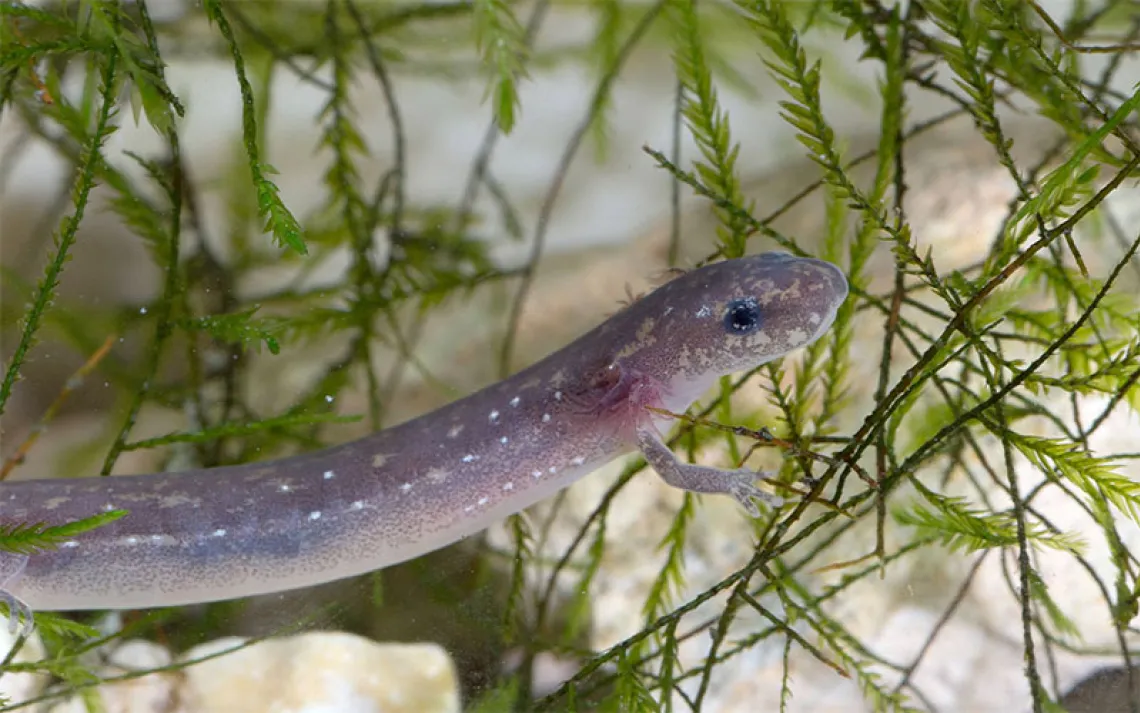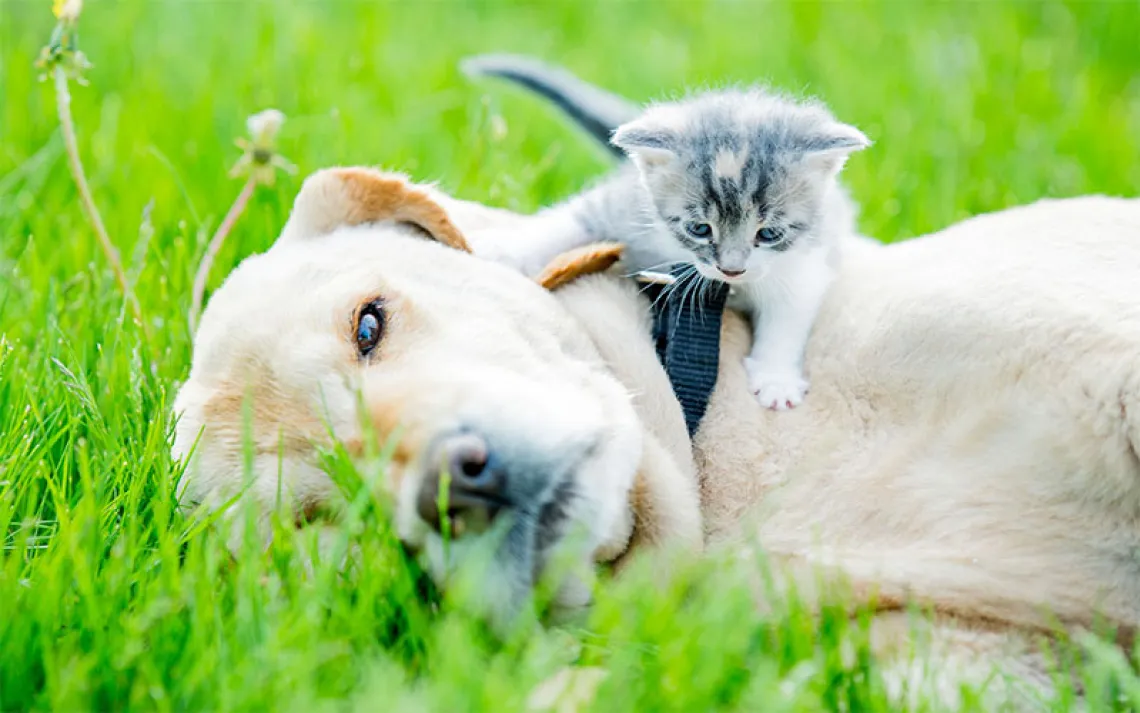Scientists Are Turning to Invisible Microbes to Support Animal Conservation
Understanding animal and environmental microbiomes could be the key to successfully reintroducing captive animals to the wild

Photo courtesy Smithsonian's National Zoo and Conservation Biology Institute
Every day, visitors to the Smithsonian’s National Zoo and Conservation Biology Institute get to see one of the most critically endangered animals in North America: the red wolf. While they once roamed plentifully across the United States, red wolf numbers have dwindled so low that only about 270 individuals remain in zoos, wildlife centers, and one wild population. Scientists are hoping that wolves from the zoo will eventually be released to help boost the populations of the critically endangered species. Before they’re released, however, the wolves at the zoo have some tummy troubles to get over first.
“Many of the wolves in captivity experience inflammatory bowel disorder or some sort of gastrointestinal distress that we believe is in part due to the diet they’re being fed,” said Carly Muletz Wolz, a molecular ecologist at the zoo. “Their probabilities of success would be less than an individual that is healthy.”
One way that Muletz Wolz is trying to help the wolves is by fixing the microbes in their guts. Just as we have our own microbiomes—communities of bacteria, fungi, and other microorganisms that live in and around us—so too do animals. Each microbial species is there to perform a specific role, whether it lives in the gut and helps us digest food or lives in the mouth and protects us from harmful pathogens. While the human gut microbiome has received a huge amount of research attention, a similar focus on animal microbiomes is just emerging, and could help scientists fine-tune conservation methods. By looking at how animal microbiomes respond and change to different environmental conditions, and observing which microbes make up the microbiomes of healthy animals, researchers are hoping to get a better picture of not just an individual’s health but ecosystem health as well.
One of the applications for this new field of research is helping animals raised in captivity, such as the zoo’s red wolves, be ready for release into the wild, as part of conservation efforts. Muletz Wolz and her colleagues are analyzing fecal samples of wild red wolves and comparing their gut microbiomes with those of wolves at the zoo to try to figure out what a healthy microbiome might look like, and where it might come from.
Diet is one potential contributor to an animal’s microbiome but may not be the whole story. The captive wolves at the zoo have a variety of diets—full kibble, a kibble/carcass combination, and full carcass—but initial research shows that even the captive wolves eating a full carcass diet still didn’t have a similar microbial composition to wild wolves. Some aspects of human care could be introducing microbes that influence the incidence of inflammatory bowel disorder. Using this information, and ongoing research on the potential role of stress on the microbiome, Muletz Wolz hopes to help these wolves get to a microbial state that would be considered healthy and similar to that of wild wolves. The approach might include changing their diets and care standards to ensure that these wolves have the highest chances of survival and success—not just in captivity but in the wild too.
“Healthy animals make babies,” she said. “Unhealthy animals don’t.”
Having a baseline understanding of microbial populations in healthy, wild individuals is important for understanding how microbiomes change in response to diet and temperature shifts, among other factors. Bethan Littleford-Colquhoun, a researcher at Brown University, investigated this with koalas in Australia and found that even this baseline microbial diversity varies across landscapes with populations in different areas in species that eat similar diets. “What we think is one metapopulation is much more fragmented,” she said.
Tracking this microbial variation in species—especially vulnerable ones, such as the koala—across a landscape is important for understanding how environmental factors might cause the microbiome to fluctuate. Littleford-Colquhoun is investigating this in her latest project with hooved species—called ungulates—in Yellowstone, where she will watch how the microbiomes of these species fluctuate during migration and study how access to food resources affects microbial composition in these animals. She’s hoping that incorporating microbial research into conservation will inspire new thinking about how to best help species in need.
“I think that we are slowly starting to realize that we need to move beyond some of the conservation strategies that we currently hold,” she said. “For me, microbiome is a key player in that.”
Other conservation biologists agree. Samantha Fontaine, a postdoctoral researcher at the University of Nevada, Reno, says that conservation needs to consider all the microbes at play in the ecosystems these animals live in, not just the animal species themselves. Her work with frogs investigated how the microbiome plays a part in helping them adapt to temperature change. She found that tadpoles raised in water with low microbial diversity fared worse when subjected to increases in temperature than tadpoles raised in pond water with usual amounts of microbial diversity. Losing access to this microbial diversity, such as microbe extinction or a change in the microbes in the habitat, might mean that animals that rely on these microbial communities might not be able to respond as well to climate-change-induced heat.
“It might also just be really important to include microbes when we’re doing conservation out in the field,” Fontaine said. “What is the natural microbiome not only of the animals that live there but the place, and how do we conserve that as part of the ecosystem?”
Brian Trevelline, an assistant professor at Kent State University, researches how anthropogenic factors, such as pollution, affect avian microbiomes. He’s working to get students involved in and excited about wildlife microbiomes but cautions that scientists still need to do more research and collect more data before making big decisions about conservation. Trevelline also urges scientists to keep species conservation the priority.
“If we can do microbiome research to understand how microbes affect conservation outcomes, without disrupting [conservation], that’s what we want,” he said. “What we don’t want is to turn these endangered animals into experimental animals.”
 The Magazine of The Sierra Club
The Magazine of The Sierra Club



